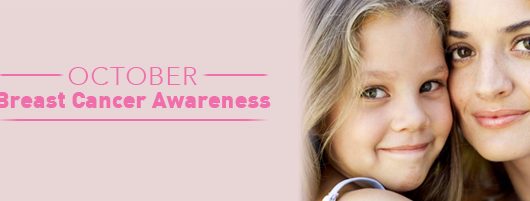Sunday is International Women’s Day. It’s a great day to reflect on the role that we as women can play in creating a better world for everyone.
For the last two days I’ve been at the U.S. Chamber of Commerce Foundation’s (USCCF) annual International Women’s Day Forum, held at  Microsoft’s New York City Offices on Wednesday and at the United Nations on Thursday. As always I left feeling inspired to do more and more than a little overwhelmed by all of the different organizations, corporations and government agencies working to address issues related to women and girls.
Microsoft’s New York City Offices on Wednesday and at the United Nations on Thursday. As always I left feeling inspired to do more and more than a little overwhelmed by all of the different organizations, corporations and government agencies working to address issues related to women and girls.
On Wednesday we specifically explored the issues and opportunities for women and girls and STEM (Science, Technology, Engineering and Math) and how technology can be leveraged for greater access a nd impact. Several Junior Leagues, for example the JLs of Greater Princeton, Northern Virginia and Phoenix, know this and are doing great work on this issue. STEM for girls is a global issue and all of us were moved by the documentary, Big Dream, which “follows the intimate stories of seven young women who are breaking barriers and overcoming personal challenges to follow their passion in science, math, computing & engineering. From small town Iowa to the bustling streets of the Middle East, Big Dream immerses viewers in a world designed by and for the inspiring next generation of girls.” This 90-minute documentary will be available for free screening.
nd impact. Several Junior Leagues, for example the JLs of Greater Princeton, Northern Virginia and Phoenix, know this and are doing great work on this issue. STEM for girls is a global issue and all of us were moved by the documentary, Big Dream, which “follows the intimate stories of seven young women who are breaking barriers and overcoming personal challenges to follow their passion in science, math, computing & engineering. From small town Iowa to the bustling streets of the Middle East, Big Dream immerses viewers in a world designed by and for the inspiring next generation of girls.” This 90-minute documentary will be available for free screening.
On Thursday, our topics broadened to cover issues like women’s health and  entrepreneurship. A highlight for me was hearing Nely Galán, the first Latina to run a TV network (Telemundo), talk not only about her career but about her initiative Adelante and its partnership Coca-Cola and 44 NGOs to inspire and empower Latinas!
entrepreneurship. A highlight for me was hearing Nely Galán, the first Latina to run a TV network (Telemundo), talk not only about her career but about her initiative Adelante and its partnership Coca-Cola and 44 NGOs to inspire and empower Latinas!
The day ended with dialogue about the United Nations Sustainable Development Goals (SDGs.) The SDGs pick up where the UN Millennium Development Goals (MDGs) end, which is in 2015. The SDGs take us to 2030. It’s easy in a developed country to think of the MDGs or SDGs as something for “them” – people in developing countries. But that is not the case.
The SDGs are applicable to every nation even though the solutions may be different. For example, Goal 1 is to “end poverty in all its forms everywhere.” Goal 2 is to “End hunger, achieve food security and improved nutrition and promote sustainable agriculture.” And goal 3 is to “Ensure healthy lives and promote well-being for all at all ages.” These are universal. For more on the SDGs read this document created by the UN.
For example, Goal 1 is to “end poverty in all its forms everywhere.” Goal 2 is to “End hunger, achieve food security and improved nutrition and promote sustainable agriculture.” And goal 3 is to “Ensure healthy lives and promote well-being for all at all ages.” These are universal. For more on the SDGs read this document created by the UN.
(Again, I thought with pride about the work of Junior Leagues—teaching financial literacy, addressing food insecurity through powerful collaborations with food banks and after school programs, addressing child health through mobile medical clinics, dental programs and so much more.)
Obviously, the U.S. Chamber of Commerce is about “commerce” and so we heard about powerful corporate social responsibility programs and partnerships specifically addressing women and girls from representatives of Microsoft, Amway, CocaCola, Walmart, Levi Strauss, Kate Spade and many others. But the USCCF and these corporations also know that real change only happens with the shared commitment of the public, private and nonprofit sectors. Most of the stories included the role that nonprofit partners played in their success. I was impressed by how strategic these partnerships were—very specific in the value each brought.
And so, back to the SDGs. As the conference program noted, “Women and girls are most often disproportionately affected by the challenges that the SDGs aim to conquer. These challenges are so complex and critical that they can only be overcome through effective, inspired leadership and functional, practical partnerships.”
As such, I encourage Junior League women, and all women’s organizations with a  focus on community improvement, to celebrate what we have accomplished thus far, and to think…to consider that vision of what our work on specific issues raised in the SDGs could look like by 2030 through inspired women’s leadership and partnerships.
focus on community improvement, to celebrate what we have accomplished thus far, and to think…to consider that vision of what our work on specific issues raised in the SDGs could look like by 2030 through inspired women’s leadership and partnerships.


1 comment
I agree with the article.